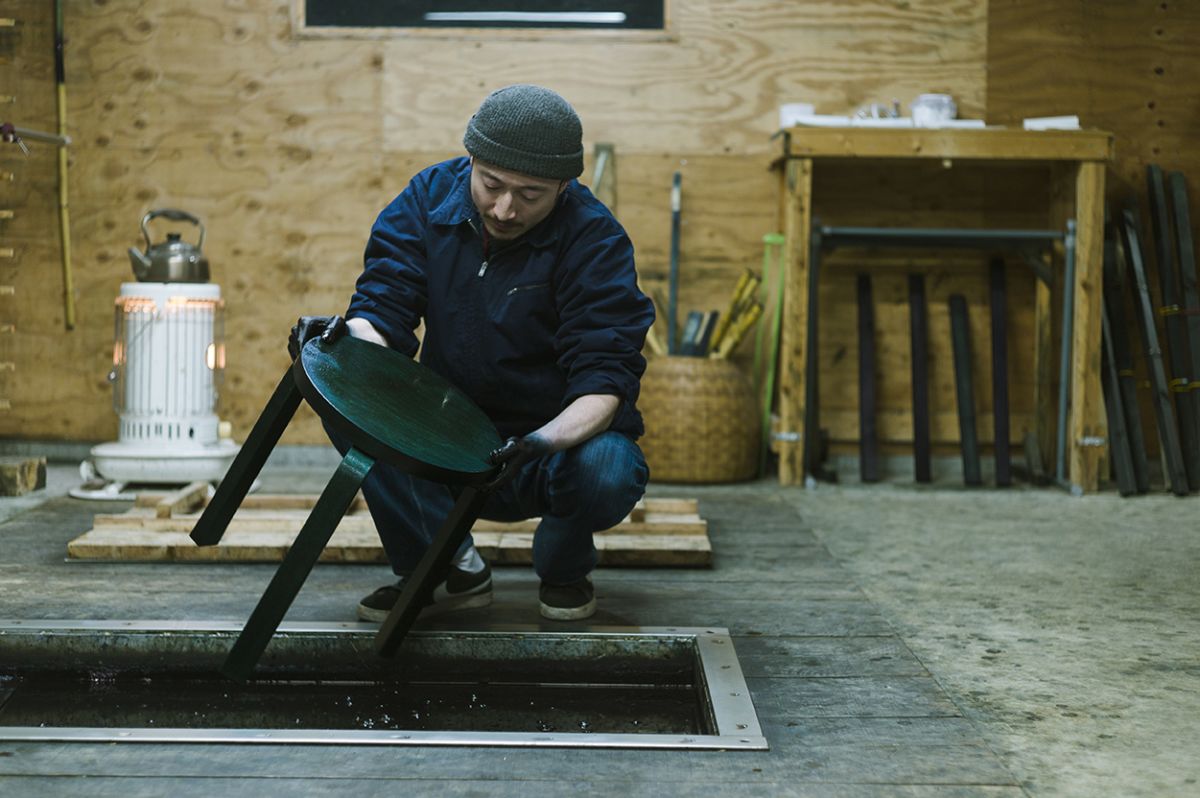
Blue Gold from BUAISOU
Four friends from Japan’s Tokushima prefecture revive the dying art of traditional indigo production


BUAISOU, based in Japan’s Tokushima prefecture, is a “farm-to-closet” project run by four friends with a shared passion: to give new life to the dying art of indigo production the region was once famous for. Using strictly traditional methods, they handle everything from plant cultivation to dye production and the creation of exceptional indigo-dyed products.
In Japan’s sleepy, fertile Tokushima prefecture, four friends are reviving a dying art.
Once the hub of indigo production in Japan, Tokushima lies at the eastern end of Shikoku Island surrounded by mountains and bordered by the Yoshino River. These days, Tokushima’s farmers have turned to more profitable, less labour-intensive crops, such as carrots, corn and rice. It’s easy to forget that in the early 19th
century, the indigo industry was flourishing and the prefecture home to more than 1,800 indigo farms.
Indigo dyeing is a traditional plant-based technique used for textile colouring and printing that dates back thousands of years. Seen as a luxury by the ancient Greeks and Romans, indigo remained a rare commodity in Europe until the 16th century, where it was called ‘blue gold’. In Japan, indigo dyeing is an age-old tradition that became widespread in the period between the early 17th and late 19th century known as the Edo era.
BUAISOU was founded in 2012 by two friends with a shared ambition: to revive the heritage craft of indigo production in the region that was once famous for manufacturing ‘Japan Blue’ – a type of indigo prized for its beautiful hue.
Keen to share their passion for indigo, BUAISOU welcomes visitors to their barn and one hectare of farmland to explore their “farm-to-closet” project. In the past, each stage of the process was the remit of a different specialist, but the BUAISOU team wanted to be involved at every step, from plant cultivation to dye-production, to creating indigo-dyed products, such as tote bags, aprons, and menswear items. More recently, they have shared their passion by hosting indigo-dying workshops in New York, Singapore and London.
Whereas much of the dye used today is synthetic, BUAISOU employs a traditional, labour-intensive production technique known as ‘Jigoku date’ – which translates as ‘producing hell’. The plant material is collected in a heated vat and sprinkled with water. It is then regularly stirred over a period of 120 days, after which a mixture of wood lye, bran and shell-ash is added, followed by a fermentation process. The result is a blue dye of exceptional depth and vibrancy that is resistant to running.
If you are interested in finding out more about BUAISOU, or would like to book a workshop, please visit www.buaisou-i.com.





